12 Types of Mosquitos in Oklahoma (With Pictures)
-
Lindsey Lawson
- Last updated:
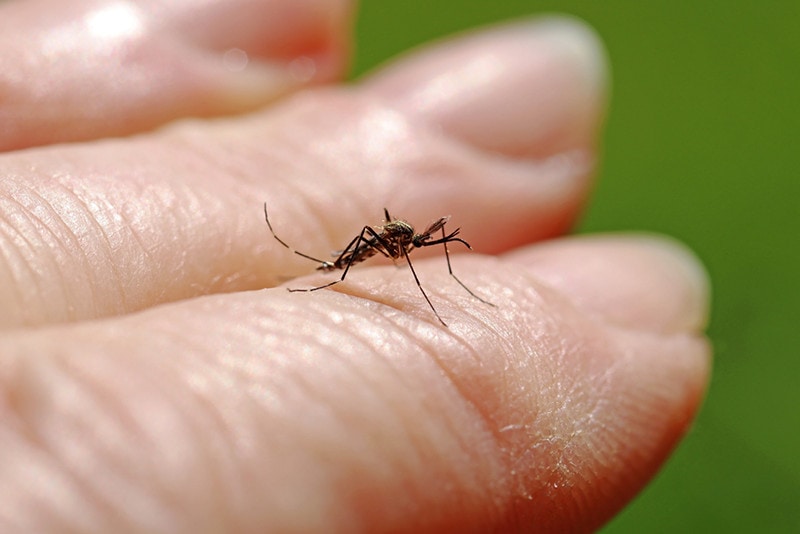
Mosquitos are undoubtedly one of the most dreaded pests in the nation. Not only do they carry a variety of diseases, but they can easily ruin outdoor activities and leave behind those itchy red welts after they bite.
Oklahoma is no stranger to mosquitos and with over 60 species occurring within the state, there’s plenty to list. In this article, we’ll talk about the 12 most common species in the Sooner State, their distribution within state lines, and give you some tips on how to keep these bothersome insects at bay.
The 12 Types of Mosquitos in Oklahoma
1. Yellow Fever Mosquito
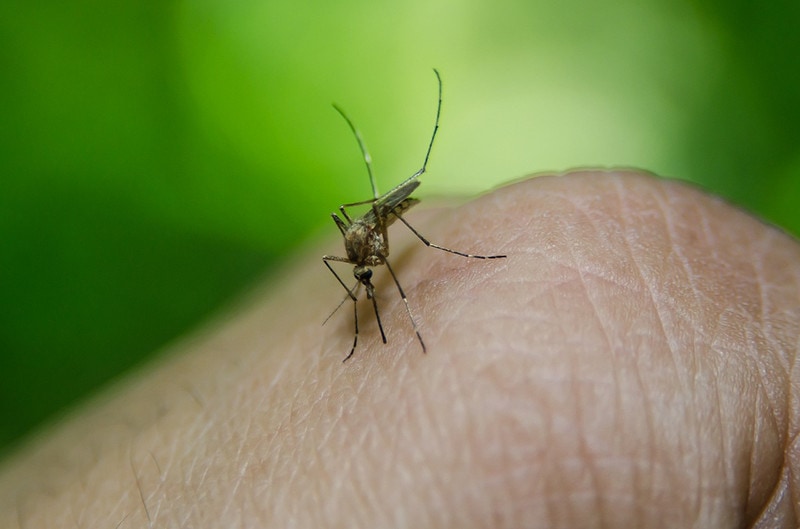
| Scientific Name: | Aedes aegypti |
| Color: | Black with white stripes |
| Region: | Throughout Oklahoma |
The yellow fever mosquito originated in Africa but has existed in the United States for centuries, likely making its way here on ships dating back to the European settlement in the new world.1 It gets its name from being the primary vector of yellow fever, but it is also associated with dengue fever, Zika virus, and Chikungunya virus.
These mosquitoes are small to medium in size and are predominately black with white stripes both on the body and white curved lines in the shape of a harp on the top of the thorax. They rely on stored or stagnant water for breeding sites and commonly lay their eggs in small containers, flowerpots, old tires, untreated swimming pools, and even drainage ditches or clogged gutters.
This species is often mistaken for the Asian tiger mosquito because of its black color and white striping. They thrive in more urban areas heavily inhabited by humans. Both males and females feed during the daytime on flower nectar, but the females also feed on blood to prepare for breeding.
2. Asian Tiger Mosquito

| Scientific Name: | Aedes albopictus |
| Color: | Black with white stripes |
| Region: | Throughout Oklahoma |
The Asian tiger mosquito is an invasive species that is native to Southeast Asia but has been present in the United States since the mid-1980s. It is believed they arrived here because of trade. They were first discovered in the southern United States but because they are highly adaptable to different climates, they spread rapidly.
These invasive mosquitoes have different behavior than native species.2 They have very short flight ranges of 100 to 200 yards and feed during the day, from dawn until dusk. Like the yellow fever mosquito, they also like to lay their eggs in small containers and gravitate toward stagnant water.
Asian tiger mosquitos are black with white stripes on their body and a parallel white stripe on the thorax. Humans are their preferred hosts, but they will also feed on a variety of other animals, especially dogs, cats, and birds. They are common vectors of Dengue fever, Chikungunya, West Nile virus, heartworm in dogs, Eastern Equine encephalitis, and Japanese encephalitis.
3. Eastern Treehole Mosquito
| Scientific Name: | Aedes triseriatus |
| Color: | Brown with silver markings |
| Region: | Throughout Oklahoma |
The Eastern treehole mosquito is a species native to North America and can be found across the Eastern United States and Southern Canada. They are medium-sized with brown bodies and silver markings on the sides of the thorax and the abdomen.
Their name comes from their tendency to lay eggs in the stagnant water found in tree holes, but these mosquitos will also gravitate toward containers, old tires, swimming pools, and any area with stagnant water. They are most common in woodlands and heavily forested areas but are also known to occupy suburban settings that offer prime breeding and egg-laying habitats.
The Eastern treehole mosquito most commonly feeds on mammals like whitetail deer and rodents but has no trouble feeding on human hosts. They are common vectors of the West Nile Virus and La Crosse virus.
4. Inland Floodwater Mosquito
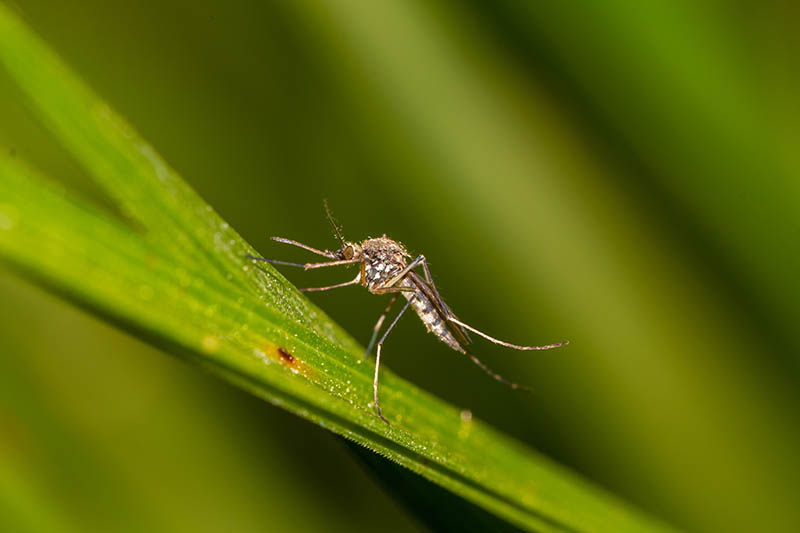
| Scientific Name: | Aedes vexans |
| Color: | Dark brown with light bands on the legs |
| Region: | Throughout Oklahoma |
The inland floodwater mosquito is a small dark mosquito with white bands on the legs. While their origin is unknown, this is one of the most widespread species of mosquito in the world and is adaptive to a variety of climates 3. South America and Antarctica are the only two continents they have not been collected.
Males feed on nectar, sap, and honeydew while the females feed primarily on blood. Humans, cattle, and other large mammals seem to be this species’ preferred hosts. They lay their eggs in moist soil, which will hatch once there has been rainfall or flooding in the area.
Inland floodwater mosquitoes are common vectors of the West Nile virus and heartworm in dogs. They are often the first species to emerge in the springtime.
5. Eastern Saltmarsh Mosquito
| Scientific Name: | Aedes sollicitans |
| Color: | Rusty brown with white banding |
| Distribution: | Southwestern Oklahoma |
The Eastern saltmarsh mosquito is native to the Eastern United States, primarily along the Atlantic and Gulf Coasts. They are medium to large and rusty brown with distinct light markings. While they are usually found within a few miles of the coast, and densely inhabit the Eastern United States, they have been found as far west as Arizona.
This species is not extremely common in Oklahoma due to the state’s geographical location but recently, heavy numbers of Eastern saltmarsh mosquitoes were discovered near Altus, Oklahoma in the southwestern corner of the state.
These insects have a painful bite and areas of Florida have previously been declared uninhabitable due to large populations. They are common vectors of heartworm in dogs and Eastern equine encephalitis.
6. Common Malaria Mosquito
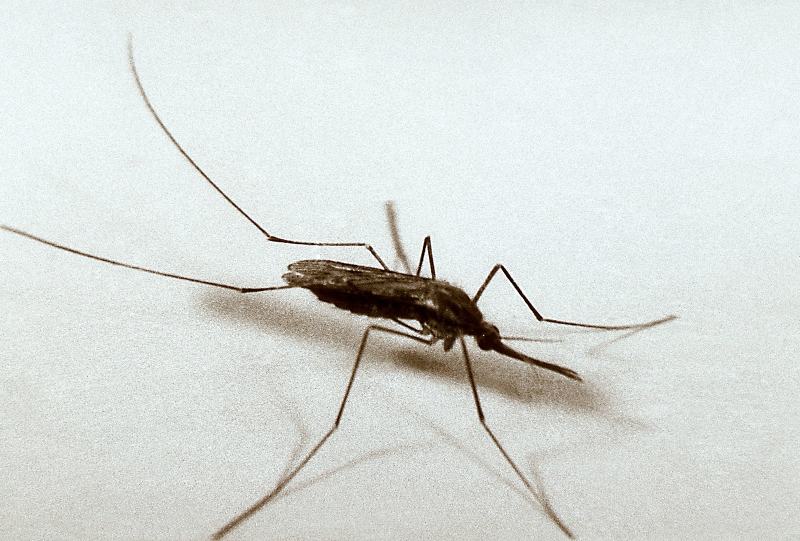
| Scientific Name: | Anopheles quadrimaculatus |
| Color: | Dark brown to black |
| Distribution: | Eastern Oklahoma |
Common malaria mosquitos are found throughout the Eastern United States and don’t range farther west than Eastern Oklahoma. Though malaria has not been a public health issue since the 1950s, this species was considered the most important vector of the disease, which is where it got its common name.
These mosquitoes are slim with very long legs and four dark patches on each wing. They lay their eggs in a variety of environments, most often near the edges of ponds, lakes, and other bodies of water. They mostly feed on large mammals and are known for entering human structures to feed on human hosts.
In addition to malaria, they are also associated with heartworm in dogs. This species is native to the United States and its population is most dense in the southeast. Their range does extend up into Southeast Canada and down to Mexico.
7. Common House Mosquito

| Scientific Name: | Culex pipiens |
| Color: | Brown with cream-colored lines on the abdomen |
| Distribution: | Throughout Oklahoma |
The common house mosquito is a small brown mosquito with a cream-colored line on each segment of the abdomen. They are also known as the northern house mosquito since they are distributed throughout the northern two-thirds of the United States.
This species is native to Africa but has made its way across the globe and is the most common vector of the West Nile virus. Common house mosquitos are some of the first species to make their appearance during the spring. They are very common in urban and suburban areas and gravitate toward any type of standing water.
They feed primarily on birds but have no trouble using humans and many other mammals as hosts. This species is known for laying eggs around sewage and septic systems. In addition to the West Nile virus, they are also vectors of Eastern equine encephalitis, Japanese encephalitis, and St. Louis encephalitis.
8. Western Encephalitis Mosquito
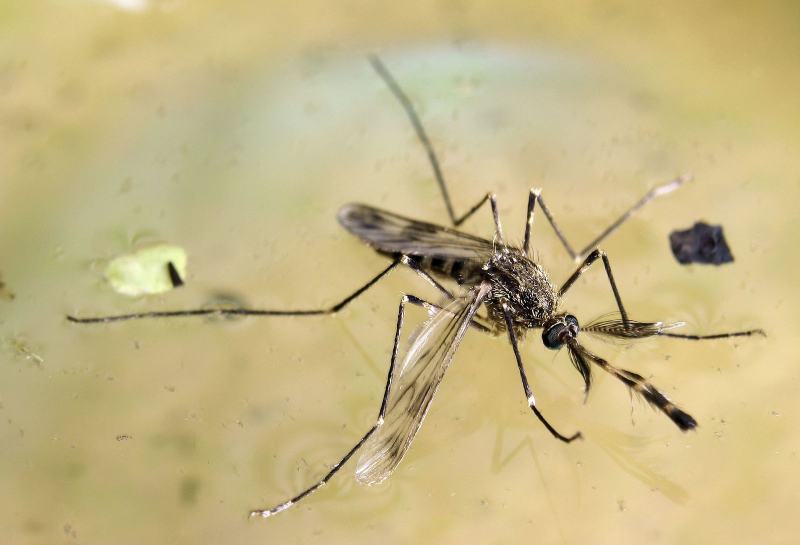
| Scientific Name: | Culex tarsalis |
| Color: | Brown with blunt abdomen |
| Distribution: | Throughout Oklahoma |
The western encephalitis mosquito is a U.S. native that is a medium brown mosquito with white stripes on the legs and a blunt abdomen with a pale single band on the proboscis. These mosquitoes can be found throughout Oklahoma and breed near standing water throughout forests, grasslands, and mountain habitats.
They commonly feed on birds during the spring months but will switch to larger mammals once summer rolls around. They are a common vector of western equine encephalitis, St. Louis encephalitis, and the West Nile virus.
This species is most common west of the Mississippi River and is extremely abundant in California. They like to feed on humans and are therefore often found near human dwellings and will enter homes to feed. Their lifecycle from egg to adult takes approximately two weeks but can excel more quickly during the warm summer months.
9. Culex Coronator
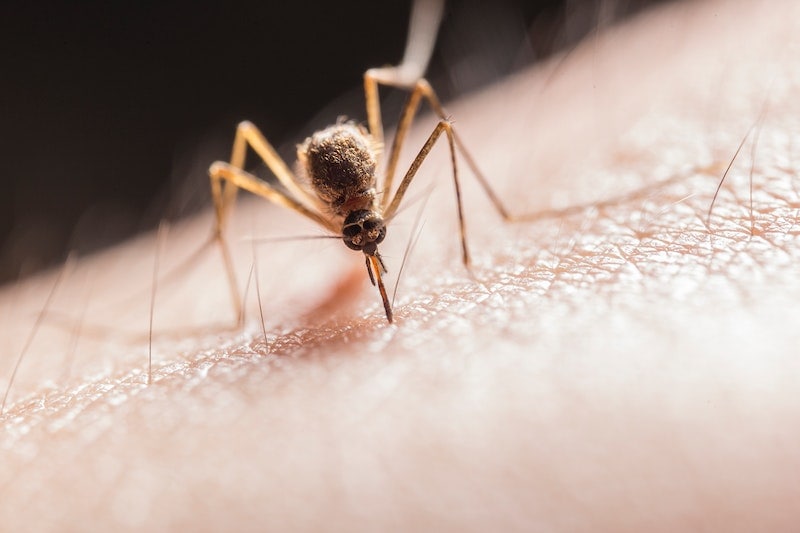
| Scientific Name: | Culex coronator |
| Color: | Light brown with white bands on hind legs |
| Distribution: | Throughout Oklahoma |
The Culex coronator species has not been given a common name and is therefore only referred to by its scientific name. They are a relatively new pest, and much is yet to be learned about the species. These mosquitoes are medium to large and very much resemble their close relation, the western encephalitis mosquito. They were first described in Central America but may also have native origins within the United States.
Their bodies are light brown with white bands on the hind legs, they also have a blunt abdomen like the western encephalitis mosquito but lack the pale single band on the proboscis. They are accustomed to a variety of habitats and will gravitate toward pools of standing water and containers.
It was first thought this species only occurred in Texas, Arizona, and New Mexico but its range has spread throughout much of the southern United States. They are vectors of the West Nile virus, St. Louis encephalitis, and Venezuelan equine encephalitis.
10. Culex Nigripalpus
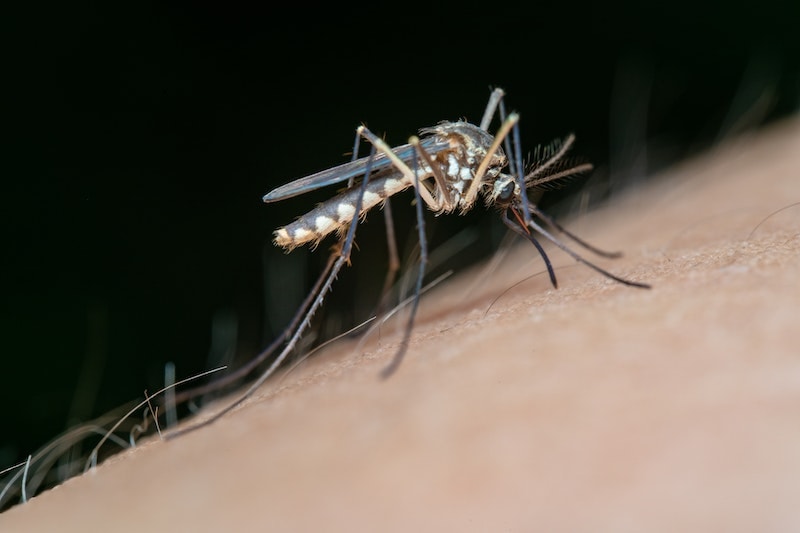
| Scientific Name: | Culex nigripalpus |
| Color: | Dark brown to bronze |
| Distribution: | Throughout Oklahoma |
Culex nigripalpus is a species native to the United States that lacks a common name. They are small mosquitos that are dark brown to bronze in color with white markings on each side of the abdomen. Because they cannot survive prolonged periods of freezing temperatures, they commonly gravitate toward coastal areas but make their way into Oklahoma during warmer months.
This species will breed and lay eggs in any aquatic habitat like permanent marshes, flooded ditches, retention ponds, and grassy pools. The females feed on mammals during the summer months but will feed on birds during the fall season.
Culex nigripalpus can also be found throughout the Caribbean and Central and South America. They are most associated with St. Louis encephalitis and eastern equine encephalitis but can also transmit West Nile virus, avian malaria, and dog heartworm.
11. Dark Ricefield Mosquito
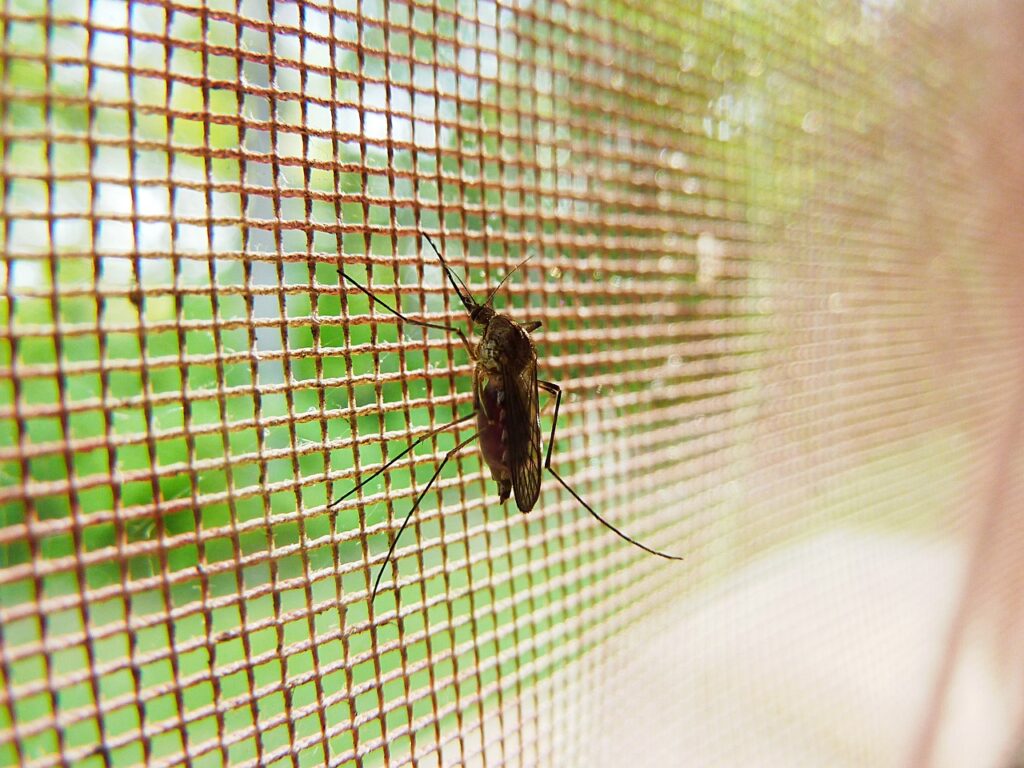
| Scientific Name: | Psorophora columbiae |
| Color: | Dark with white bands on the legs |
| Distribution: | Throughout Oklahoma |
The dark ricefield mosquito is native to North and South America. In the United States, its range is limited to the Southeast and up into areas of the Midwest. They are large, dark-colored mosquitoes with white banding on their legs.
This species is associated with pools of water on agricultural landscapes, especially rice fields throughout the Southeastern United States. They have been known to kill cattle when in large swarms due to anemia and suffocation. They are also vectors of anaplasmosis in cattle and Venezuelan equine encephalitis.
Dark ricefield mosquitos are not known to transmit diseases to humans but they have a very painful bite and will consistently go after their host. They have a very fast lifecycle during the warm months, developing from egg to pupae in less than 4 days.
12. Psorophora Ferox
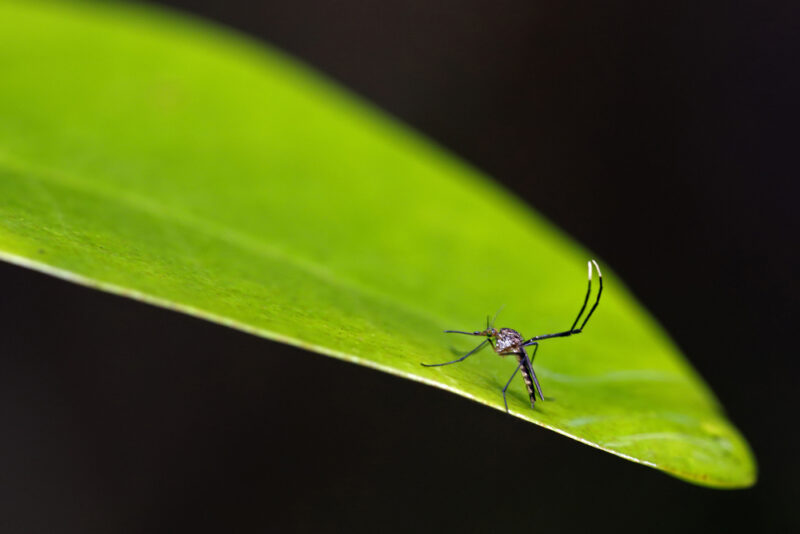
| Scientific Name: | Psorophora ferox |
| Color: | Dark brown |
| Distribution: | Central to Eastern Oklahoma |
The Psorophora ferox is another species that lacks a common name. They are native to North and South America, breeding in woodland pools and areas of natural, standing water. These large, dark mosquitos have white tips on the hind legs.
Psorophora ferox prefers to keep to woodland areas and generally keeps away from urban environments. Their run-in with humans is typically due to humans exploring or inhabiting the woodland environment. This species isn’t as widespread as some others within the state, most often being found in Central to Eastern Oklahoma where the landscape provides their preferred habitats.
They breed and lay eggs in woodland pools and their range extends from Southeastern Canada, through Mexico, and into Central and South America and \the Caribbean. Females feed primarily on mammals but will also feed on birds. They are a particularly aggressive species that are very persistent and have a painful bite.
Importance of Mosquito Control
Most people living on planet earth will have to deal with mosquitos at one time or another. Most of us must keep up with mosquito control at least several months out of the year, if not year-round.
It is important to take preventative measures to not only prevent you, your family, and any pets or livestock from being bitten but also to keep control over local mosquito populations.
While not all mosquitoes transmit disease, many species do. Steps must be taken for the sake of individual and public health. At the very least, these pesky insects are a nuisance that can cause painful bites, leave itchy red welts, and can ruin any outdoor activity.

Tips for Controlling Mosquitos Both Inside and Outside
Remove Standing Water
Since mosquitoes lay their eggs near water, you will want to make sure that you remove all standing water from your yard. This includes planters, buckets, small pools, trash bins, old tires, and birdbaths. Make sure to fill in any tree holes or areas on the ground that hold standing water, too.
Any rain barrels, buckets, or cisterns that hold standing water should be properly sealed. Chlorinated swimming pools typically have too much chlorine for mosquitos to use, but lack of chlorination and proper upkeep can make large pools a breeding ground. There’s no harm in offering bird baths to your backyard birds but make sure to keep them cleaned regularly.
Kill the Larvae and Adult Mosquitos
Any adult mosquitos or larvae around your property should be killed. Larvicides can be used to treat larger bodies of water that cannot be sealed or covered and aren’t used for drinking water. Adults will gravitate toward humid areas like the garage, and under patios, you can use mosquito traps or insecticides to keep their population down. You could even consider calling a professional to have your yard sprayed for mosquitos.
Never Leave Doors or Windows Open Without Screens
To keep any mosquitos from making their way indoors and feeding on people and pets in the household, make sure you keep your windows and doors closed unless they are properly screened and can keep mosquitos out. Avoid propping your door open, as this gives them easy access, especially during the months they are most active.
Repair or Seal Any Entry Points
Thoroughly inspect your home for any possible entry points that are small enough for mosquitos to use. If you have any holes in your screens or gaps in doorways or any unsealed points of entry, have them repaired quickly.
Hire Pest Control
If you have a severe mosquito problem either indoors or outdoors, professional pest management companies can come to your property and assist. Some prefer to avoid this due to the upfront costs, but it can save you a lot of hassle in the long run and help you get control of your local mosquito population.
These companies can use insecticides both outdoors and indoors. Not only are they highly trained on how to safely use these chemicals, but they can also inspect your property and provide you with professional advice.

Preventing Mosquito Bites
Use Mosquito Repellent
Mosquito repellents are the most common and popular way to prevent being bitten. A repellent is anything applied to the skin or clothing that will deter the mosquito from approaching. This can include chemicals like DEET, permethrin, and picaridin, or natural substances like citronella, cinnamon oil, peppermint oil, neem oil, lemon eucalyptus oil, and more.
The common chemicals used in repellents are toxic if ingested and should be used as directed. It is also important to wash them off thoroughly as soon as you are out of mosquito territory. Anyone concerned with the safety of these substances can always choose a natural alternative.
Wear the Right Clothes Outdoors
When you are outdoors for long periods and exposed to mosquitos, it’s a good idea to wear loose, thick clothing to help protect you from being bitten. It is also recommended that you wear light colors since these insects are more commonly attracted to certain colors. A study conducted on this subject revealed that mosquitos were more attracted to colors like red, orange, black, and cyan.
Stay in at Dusk and Dawn
Mosquitos are most active at dawn and dusk, so it only makes sense to keep indoors during this time if you are wanting to prevent bites. While some of the invasive species like the yellow fever mosquito and the Asian tiger mosquitos are day feeders, most native species rest in cool places during the heat of the day and feed throughout the evening.
Conclusion
There are plenty of species of mosquito in Oklahoma and throughout the entire country. The twelve species listed consist of both native and invasive mosquitos which are common vectors of various diseases. Regardless of where you live, it’s always a good idea to take preventative measures to control local mosquito populations and prevent bites.
Featured Image Credit: Astrid Gast, Shutterstock
Contents


